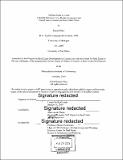| dc.contributor.advisor | Alex van de Minne. | en_US |
| dc.contributor.author | Sibor, Daniel(Daniel William) | en_US |
| dc.contributor.other | Massachusetts Institute of Technology. Center for Real Estate. Program in Real Estate Development. | en_US |
| dc.coverage.spatial | n-us--- | en_US |
| dc.date.accessioned | 2020-03-09T18:38:50Z | |
| dc.date.available | 2020-03-09T18:38:50Z | |
| dc.date.copyright | 2019 | en_US |
| dc.date.issued | 2019 | en_US |
| dc.identifier.uri | https://hdl.handle.net/1721.1/124039 | |
| dc.description | Thesis: S.M. in Real Estate Development, Massachusetts Institute of Technology, Program in Real Estate Development in conjunction with the Center for Real Estate, 2019 | en_US |
| dc.description | Cataloged from PDF version of thesis. | en_US |
| dc.description | Includes bibliographical references (page 41). | en_US |
| dc.description.abstract | Cross-border investment in United States commercial real estate has grown at an astounding rate - nearly tenfold - since the turn of the century. Yet little remains quantitatively understood about the practical effects of this unprecedented shift. Using Granger causality testing, this paper explores how cross-border transactional volume impacts and interacts with commercial real estate prices within the four largest metropolitan real estate markets in the United States, and on an aggregate nationwide basis. Both rigorous testing and visual analysis of historical price indices and cross-border volume revealed unidirectional causality in all markets tested, but in different directions. For the total United States and New York City, causation appears to flow from price to cross-border volume. In Washington, DC, Los Angeles, and San Francisco, causation appears to flow from cross-border volume to price. Each direction of causality may support various strands of conventional wisdom regarding cross-border capital flows into the United States. However, the geographic specificity of the results suggests that the lessons of any one market are rarely applicable to another. Through qualitative interviews with cross-border investors and industry experts, this paper also examines the motivations, priorities, and decision-making processes which may help explain the results obtained. | en_US |
| dc.description.statementofresponsibility | by Daniel Sibor. | en_US |
| dc.format.extent | 53 pages | en_US |
| dc.language.iso | eng | en_US |
| dc.publisher | Massachusetts Institute of Technology | en_US |
| dc.rights | MIT theses are protected by copyright. They may be viewed, downloaded, or printed from this source but further reproduction or distribution in any format is prohibited without written permission. | en_US |
| dc.rights.uri | http://dspace.mit.edu/handle/1721.1/7582 | en_US |
| dc.subject | Center for Real Estate. Program in Real Estate Development. | en_US |
| dc.title | All real estate is local : causality between cross-border investment and United States commercial real estate prices | en_US |
| dc.title.alternative | Causality between cross-border investment and United States commercial real estate prices | en_US |
| dc.type | Thesis | en_US |
| dc.description.degree | S.M. in Real Estate Development | en_US |
| dc.contributor.department | Massachusetts Institute of Technology. Center for Real Estate. Program in Real Estate Development | en_US |
| dc.contributor.department | Massachusetts Institute of Technology. Center for Real Estate | |
| dc.identifier.oclc | 1102321127 | en_US |
| dc.description.collection | S.M.inRealEstateDevelopment Massachusetts Institute of Technology, Program in Real Estate Development in conjunction with the Center for Real Estate | en_US |
| dspace.imported | 2020-03-09T18:38:50Z | en_US |
| mit.thesis.degree | Master | en_US |
| mit.thesis.department | RED | en_US |
